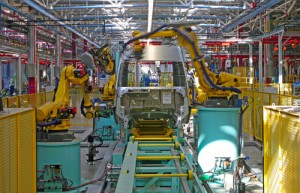
Relationships: The Human Algorithm in Data-Driven Hiring
Although technology may reign as king in the modern economy, the wheels of commerce can’t turn without savvy professionals to design, deploy, administer and maintain the machine. Interestingly, however, our growing reliance on automation and the push to conquer digital frontiers has instilled in professionals of all roles an equally increasing desire for humanization — social interactions, personal engagement, cultural fit, the employee experience and, of course, meaningful relationships. This need transcends frontline workers. It’s also expressed by hiring managers, MSP program managers and staffing providers.
Business needs are changing. The global economy is changing. The notion of the traditional work arrangement — the environment in which Boomers and Gen X talent were raised — no longer exists to a large extent. Sourcing, recruiting and hiring approaches for new generations and classifications of talent must also evolve. That requires striking an intricate equilibrium between technology and socialization. As the battle for exceptional talent intensifies, leading staffing professionals are deploying bolder and more creative candidate sourcing strategies. New and emerging technologies — particularly those versed in data analytics — will play prominent roles in talent acquisition this year. Yet the most successful efforts will be those that include humanity in their algorithms.
Data Informs Decisions, It Doesn’t Engage Talent
Big Data became a big topic in 2015. As staffing professionals, we’re coming to depend on people analytics with greater reliance. Through advances in data science, we can generate more accurate metrics, improve forecasting, better predict needs and potential pitfalls, effectively determine optimal candidate qualities, and vet prospective talent thoughtfully. In fact, machines seem to be more adept at selecting new hires than people are. A study performed by the National Bureau of Economic Research (NBER) in November found that the instincts of hiring managers paled in comparison to the calculations of machine-based hiring algorithms.
NBER researchers predicated their discoveries on tenure — the retention of employees who had been hired based on the recommendations of an automated job test versus those selected by a human interviewer. The test posed questions related to technical skills, personality, cognitive abilities and perceived fit with the company’s business culture. Applicant responses were processed through an algorithm that provided a recommendation for each candidate’s potential: high, moderate and low.
Once placed, all the candidates identified as high-potential fits by the computer outlasted the talent ranked in the lower tiers. Often times, hiring managers would choose applicants outside the highest scoring groups because of emotional connections or “gut instincts.” Those decisions failed to rival the recommendations of the machines.
The point here is not to illustrate the superiority of computers or the fallibility of humans. It’s really about application. A data-based hiring process is an undeniably important trend for the industry in 2016. People analytics provide amazing insight about key performance indicators and critical metrics. However, their greatest contributions come during the planning and decision-making stages. I prefer to think of this as data-supported, rather than data-driven, hiring.
What today’s highly skilled talent want in a job can’t be conveyed by a machine or a dataset. Motivated individuals seek purpose, a compatible business culture, a mission to share, relationships with colleagues, an environment where they can develop and contribute, and a sense of belonging. Machines have proven instrumental in helping us identify the best prospects, measure performance, refine our searches, qualify talent and place them in the most compatible environments. Yet, it takes savvy recruiting professionals to find them, engage them and captivate them.
The talent with the most sought-after skills no longer waste their time filling out lengthy, formulaic applications on job boards. They’re not seeking out recruiters or doing so through what we once considered “traditional means.” If anything, 2016 will be the year of the passive candidate. And it’s going to take a very different talent acquisition strategy.
Candidates as Customers
Recruiting in 2015 focused a great deal on the strength of social media and content marketing techniques to reach talent. This year, I believe this marketing approach will transition into a business development approach. We’re going to be treating candidates as customers, not resumes or commodities or bodies to fill seats. Applications become leads, and those leads become sources of potential customers — in this case, talent. And just as with the best sales practices, a customer-based talent acquisition process works through a mix of personal interaction and relationship building, supported by technology.
As Decision Toolbox CEO Kim Shepherd writes: “You may not have thought of it this way, but your applicant tracking system is more than storage for archiving résumés. With it you can build and manage a pipeline, including measuring leads, tracking conversion rates, and even creating the recruitment version of a sales forecast. This will provide you with tangible metrics to manage against, such as deliverables and targets.” So, in a fashion, our recruitment software functions like a CRM tool.
Beyond that, today’s highest performing recruiters are behaving like business development executives. Think about it: sales leaders don’t have a Monster.com or CareerBuilder site where thousands of potential customers vie to be selected as clients. That’s not a luxury they enjoy. Instead, they act. They explore every avenue, reach out to their communities, interact with prospects through social media, network, share information and comb through a vast crowd of individuals to find the best matches. They use data to inform their decisions and hone their processes, yet they never automate their connections with people. This relationship-centric, community driven and networked approach is precisely where recruiting must go in 2016.
Building Talent Communities, Not Resume Warehouses
Although 77 percent to 92 percent of all agencies now utilize social networking sites as primary hiring tools, recruiters must continue to expand their social reach and skills. Ideal candidates are more elusive today than ever before. Even Facebook, Twitter and LinkedIn are no longer the hottest meeting spots. Successful recruiters are turning to less traditional channels like Snapchat, Pinterest, Vine and Instagram.
Capturing the interest of the best talent — many of whom are currently employed — requires piquing their attention, keeping them engaged and presenting an offer alluring enough to win them over. It involves integrating with their circles, becoming a part of their group and welcoming them into ours. That’s why I believe one of the most essential elements in talent acquisition this year will be the focus placed on community. In fact, that’s one of the founding principles behind our Crowdstaffing model.
In this structure, recruitment experts tap into the power of the crowd to source candidates and build an expansive marketplace — a talent community. Recruiters are the architects, coaches and “tour guides” for these communities. They don’t merely recruit by gathering details that will be used to match talent to employers when position needs arise — they engage talent. In essence, the process becomes the curation of jobs: interacting with candidates, capturing and maintaining their interest, communicating job prospects, developing their personal brands and online profiles, and all other aspects of facilitating the placement process. By engaging job seeking professionals in this manner, the more academic aspects of recruiting occur organically as a natural outcome. And how do these Talent Engagement Specialists sow the seeds that sprout into communities?
- They determine the business objectives of their clients and the career goals of their talent, developing communities of meshing values that support both needs.
- They make the candidate experience the foundation on which everything in the community is built.
- Their communities, like physical neighborhoods, are hubs for socialization, interaction, shared experiences, knowledge transfer, lessons learned and making connections. Conversations flow and relationships are nurtured.
- They target communications to their audience, using emails, social media, newsletters, career sites and other resources that are the most accessible, meaningful and preferred among their community members.
- Their communities are open and welcoming to passive candidates.
Elite recruiting professionals not only offer informative content that attracts job seekers from all situations, they enlist their community members as storyteller and ambassadors. They share information on career advancement strategies, personal branding tips, upcoming opportunities, client business cultures, employees, perks, compensation, innovations and more. And they work with community members to develop and curate these messages through a variety of media, including blogs, podcasts and videos.
The People in People Analytics
When email first became available, most of us couldn’t contain our excitement at receiving that first digital message. Correspondence was immediate, in real time. Not too long after, though, the novelty faded. Canned responses were programmed in. Spam filled our inboxes. Today, email and messaging systems can predict a generic response and reply on our behalf. And now what excites us? Getting a personal letter in the mailbox. Tearing open that envelope. Struggling to make sense of the handwriting. It’s special. It’s human. And it doesn’t at all detract from the technologies we continue to use to streamline our lives.
The strongest recruiters are taking advantage of the intelligent talent acquisition technologies present in new recruitment software. Through the data available, they can optimize their efforts. However, the most innovative automation can’t engage and inspire top talent. Over the next few weeks, I’ll be delving deeper into the sourcing and recruiting advances that will influence the new year. I’ll also be exploring the latest technologies and how they integrate to the best practices of next-generation recruiting models.
If you’d like to learn more about the evolution of total talent acquisition or join me in an engaging, interactive discussion about “Trends, Disruptors and Technology,” I’d love to meet with you at the VMSA Live event in Florida on February 10. My first speech, “Crowdstaffing: The evolution of talent acquisition,” takes place at 11:30 a.m., followed at 1:15 p.m. by my interactive session on “Trends, Disruptors and Technology.” I hope to see you there!
Business & Finance Articles on Business 2 Community(33)
Report Post






